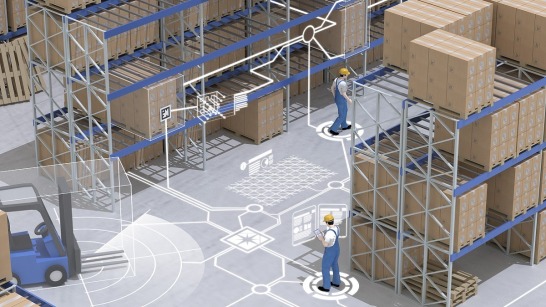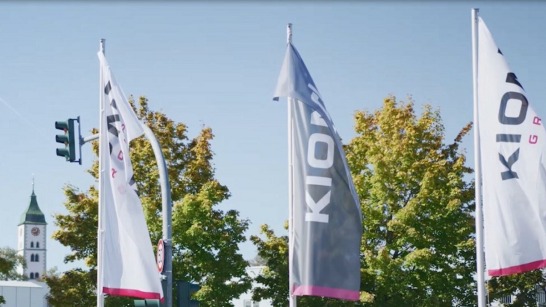Designing a map is easy. You just need to include all of the features, right? Well, actually it is somewhat more complex. Political maps differ from topographic maps, hiking maps and relief maps. While they may depict the same geographic areas, they require entirely different information. The same goes for creating a warehouse map. “Today, a team of digitizers can easily map a warehouse using their measuring devices,” explains Tino Krüger-Basjmeleh, a senior Robotics expert for KION Mobile Automation. “But the map would be useless to an automated transport systems producer because it would not include features such as reflectors.”
Promising market is squandering potential
Automated vehicles require maps where they can orient themselves, or where they can be programmed to follow specific routes. “Numerous automation projects fail because there is always some upfront effort and cost involved in making the maps,” says Krüger-Basjmeleh. “This is where many customers lose interest.” In other words, there is a growing potential market whose potential cannot be exploited because the necessary standards are not there. With the era of automation getting underway, a mapping standard needs to be established: a document that can serve the various requirements of machines and vehicles as accurately as possible. It also needs to be as simple as possible so that humans can operate and amend them - even if they are not engineers – so that if you simply want to include a virtual wall to prevent an automated vehicle from taking a particular route. The maps need to be flexible, compatible and easy to implement.
KION Group - precisely the STILL EMEA operating unit - is working together on the research project with two competing sensor producers, Pepperl+Fuchs and Sick, several research institutions and universities as well as industry competitor Jungheinrich. An unusual team? “What we want to accomplish exceeds the expertise of a single company,” says Krüger-Basjmeleh. “Pre-competitive, joint research is essential.” An individually developed solution would not win over potential clients. These maps can be useful for many services beyond navigation, such as quality assurance and documentation. According to Krüger-Basjmeleh, the real competitors are from Asia and the US. “We have been saying to everyone that we need to figure this out together.” An additional benefit is that all of the project members are based in Hamburg, which makes communication easier.
“Where exactly am I?”
The research project got underway in September 2017 and Krüger-Basjmeleh is happy with the results so far. “We have a terrific initial overview of all the necessary information as well as ideas on how the maps can be visualized and amended in a meaningful way.” The project partners are working on a service known as "RAIL" or reference architecture indoor localization. The mapping standard should allow for various degrees of accuracy and services, including geolocation, transportation of goods and remuneration management. “One of the reasons Google Maps is so successful is because everyone uses it for different purposes,” explains Krüger-Basjmeleh. Similarly, RAIL needs to be a springboard where users can find the quickest or simplest route from a vehicle to a pallet. Yet, there are many other factors that come into question, such as localization. “Without precise information about my location, I cannot plan the route,” says Krüger-Basjmeleh. “So the first question is: where exactly am I?”
Ultimately, the goal is for trucks to transmit information using their sensors when they discover obstacles. “One of the most challenging tasks that KION Group has set itself is increasing a machine's degree of freedom,” notes Krüger-Basjmeleh. It is also one of the most important projects for the future and one that requires Group-wide team work, involving all of the brands. Creating a standard for warehouse maps could help KION Group break into markets which have not yet been addressed. The next phase of the research project is set to begin in 2019. “We have taken a major step, but there is still so much more work left to do.”



_image_546x307.jpg)